Whale watching is considered a top experience in the Great Bear Rainforest, one of the best places on the planet for wildlife sightings, located in the Pacific West Coast of British Columbia, Canada. All year round, you can visit this pristine area and embark on tours to encounter some of the most diverse and exciting animals in existence, including several species of whales. The months from April to October are optimal for whale watching in the Great Bear Rainforest and the surrounding regions, with the peak season being from May to September.
Whale watching tours leaving from Bella Coola are available from Spring to Fall with local providers such as Maple Leaf Adventures and Bella Coola Grizzly Tours. Both companies are sure to provide you with unforgettable memories alongside these magnificent creatures, but their tours can book up months in advance. Make sure to plan ahead, grab your camera and binoculars, and embark on this one in a lifetime adventure!
Humpback Whales: The Majestic Giants
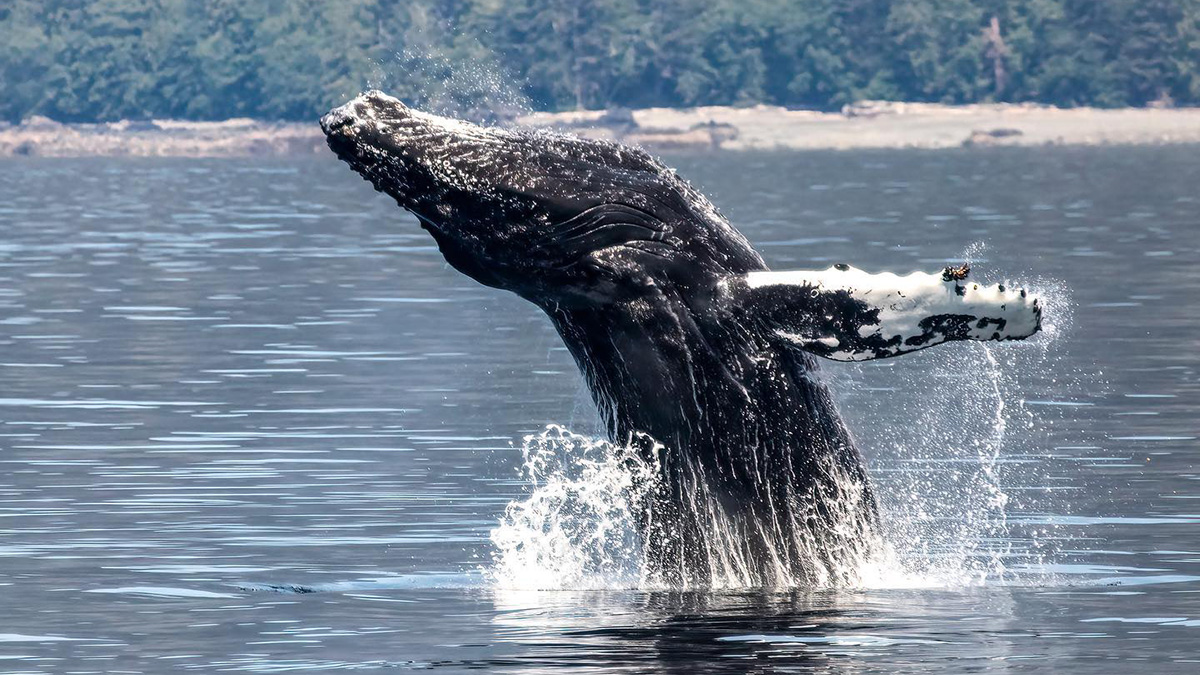
@drozdafigita
Humpback whales are frequently spotted in the waters of the Great Bear Rainforest. When you’re out whale watching, you can easily identify these majestic giants by their distinctive back hump and impressive size: they reach lengths of up to 19 meters and a staggering weight of 36,000 kilograms. Imagine witnessing a whale of this size propelling itself out of the water just beside your boat – it’s truly one of the most unique moments nature can offer.
With lifespans of 80 to 90 years, these whales embark on migrations of up to 8,000 kilometres between breeding and feeding grounds, consuming up to 300 pounds of food daily, mainly consisting of shrimps and small fish.
The humpback whales of the Great Bear Rainforest are not only truly remarkable but also essential to the local economy and environment. They draw thousands of tourists each year seeking special moments with them, and the Coastal First Nations of British Columbia have long recognized humpback whales as integral to the region’s coastal ecosystem.
Orcas: The Formidable Hunters
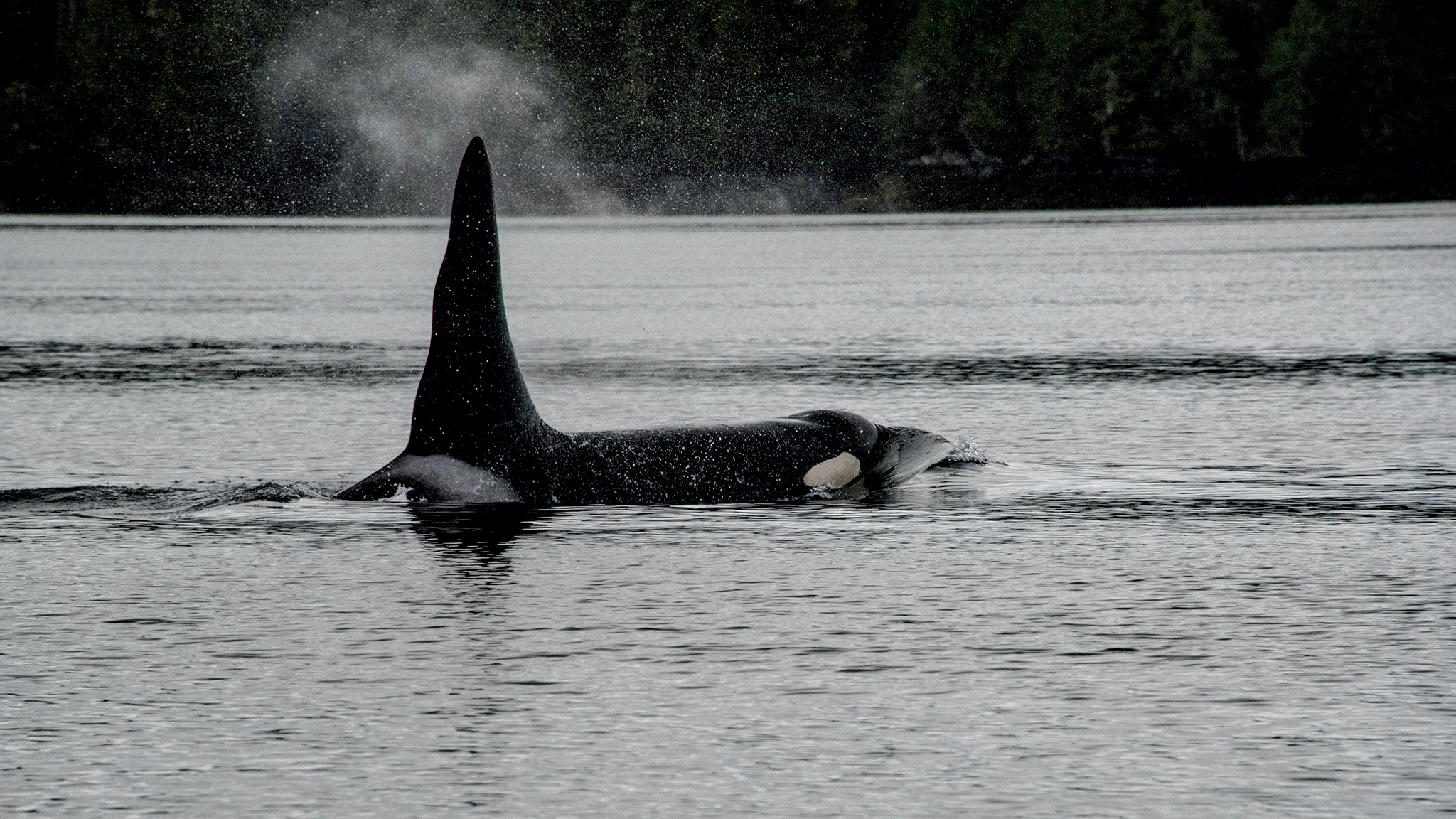
Geoff Moore
Orcas, also known as killer whales, are actually the largest part of the dolphin family, but their overall size is what sets them apart from others in their suborder, with males ranging from 6 to 8 metres and females from 5 to 7. These incredible creatures are easily recognizable by their black-and-white bodies while you’re on a whale watching outing in the Great Bear Rainforest, and are known to be extremely intelligent and social animals with unique migratory patterns and hunting techniques.
Transient orcas in the Northeastern Pacific roam along the coastlines and may travel hundreds of kilometres in search of prey, while resident orcas tend to remain within specific home ranges where they have established social structures and feeding grounds. Despite their names, orcas are not a threat to humans and are also a major draw for ecotourism in the Great Bear Rainforest.
Fin Whales: The Graceful Behemoths
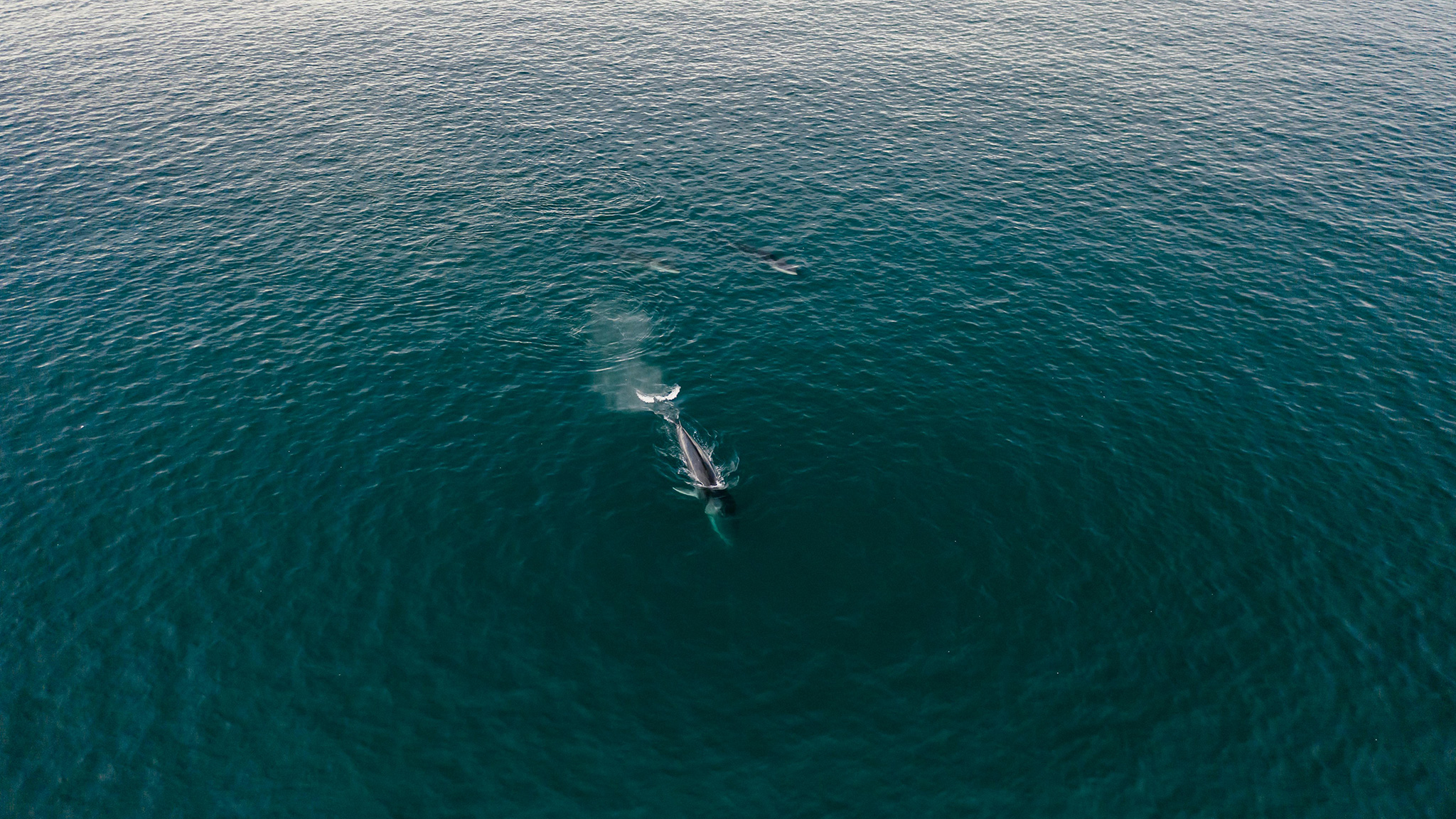
Mikhail Nilov
At up to 20 meters long, fin whales are the second-largest creatures on Earth. These graceful behemoths are not as easy to spot on a whale watching tour in the Great Bear Rainforest as other whales since they don’t usually stay near coastal lines, except in one specific inlet: The Kitimat Fjord System (KFS), a network of channels, islands, and shallow sills.
Since a population of around 100 fin whales has been found frequenting the fjord system, it’s been a mystery as to why they choose to stay in the area and so close to shore. Reasons might include remoteness, vast numbers of zooplankton for the whales to eat, or a place to hide from predatory killer whales.
Lucky for us, this is the only place on earth where fin whales can be spotted from the shore, and you can expect to see them mostly from June to October in the Great Bear Rainforest.
Grey Whales: The Resilient TraveLlers
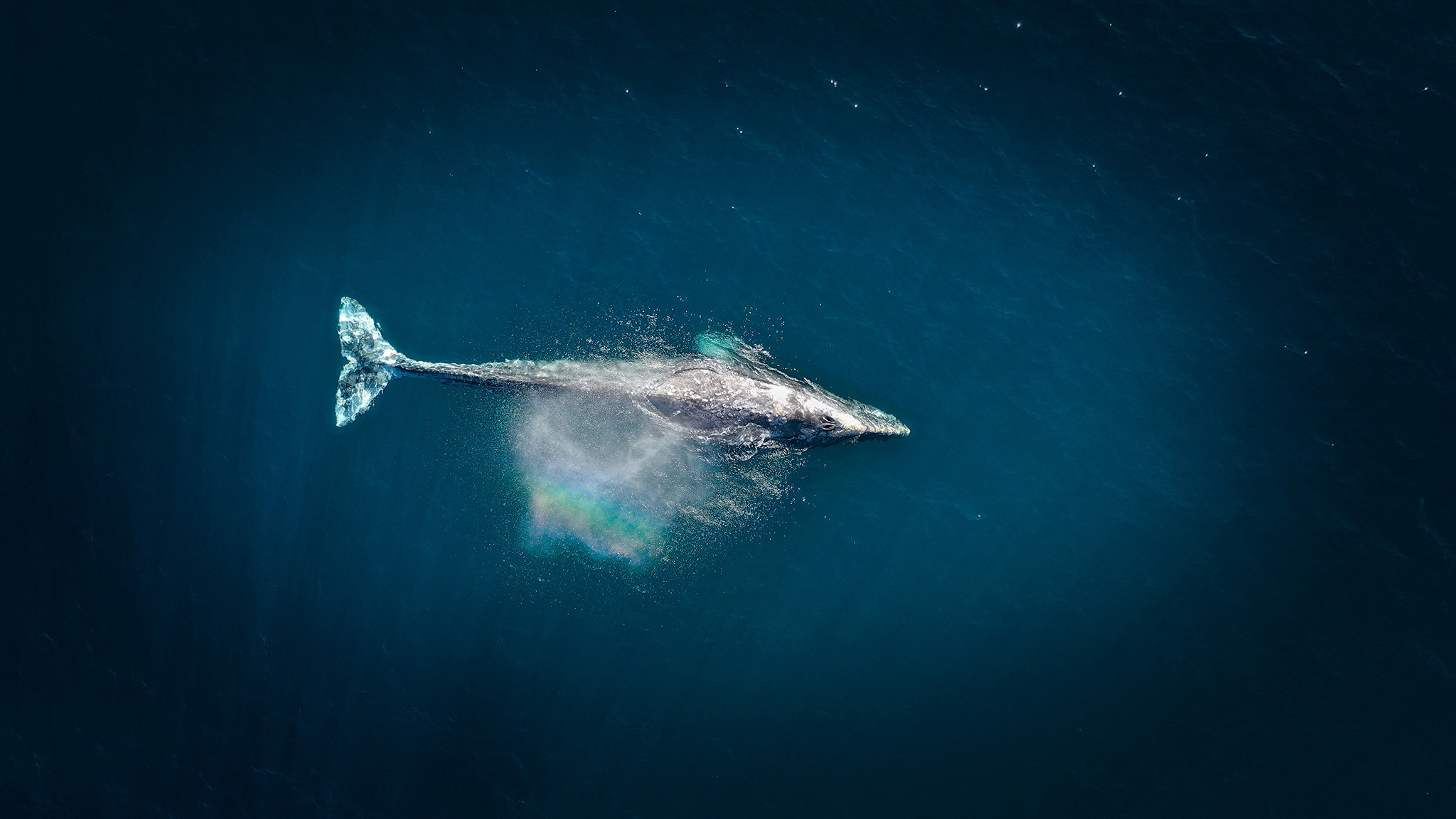
Venti Views
Grey (or gray) whales can be spotted on whale watching tours in the Great Bear Rainforest along with other species in the Chatham Sound and Prince Rupert area, where they stop for feeding and along migratory routes. These resilient travellers undertake one of the longest migrations of any mammal, travelling between their breeding grounds in Mexico and their feeding grounds in the Arctic.
April is often a good month to spot the beauty of the grey whales as they journey northward along the coast, and usually from late September to early November as they go southward back to Mexico.
Minkes: The Elusive Ones
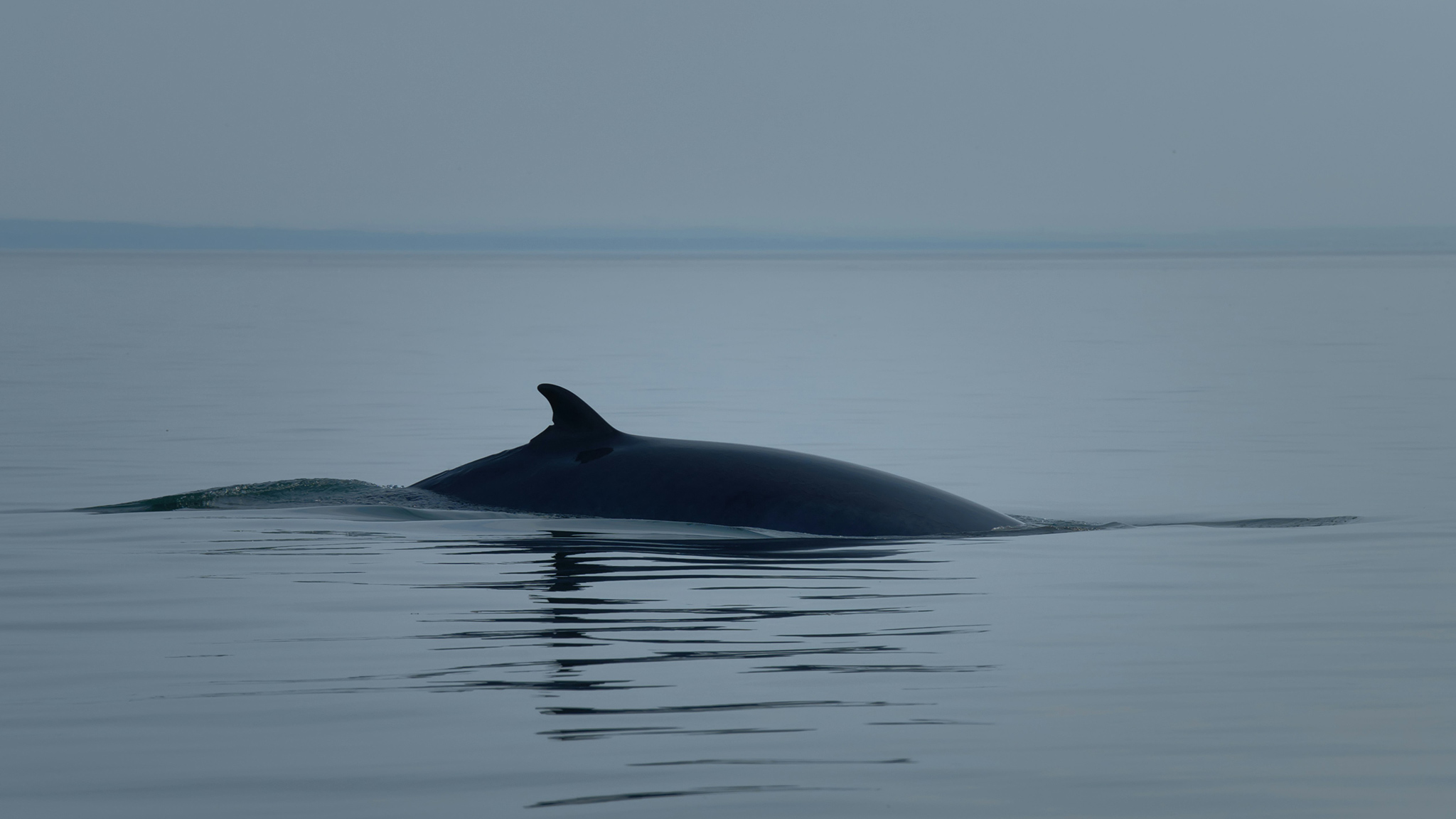
Karl-Heinz Müller
Sightings of the elusive minke whale while whale watching in the Great Bear Rainforest are not as common as other species, but they are not unheard of, especially in the summer months as they migrate along the shores. Minke whales are often solitary animals, but they can be seen in small groups. They’re also known for swimming quickly and diving when approached by boats, so consider yourself lucky when you spot one of these mysterious animals!
The coastal waters of the Great Bear Rainforest are truly blessed to be frequented by so many species of these magnificent marine giants, making whale watching an essential addition to the bucket list of anyone seeking an intimate and astonishing experience with nature.



